Case Studies
Time Synchronization Between Radio Telescopes: Toward Observing Radio Waves from Exoplanets (Tohoku University)
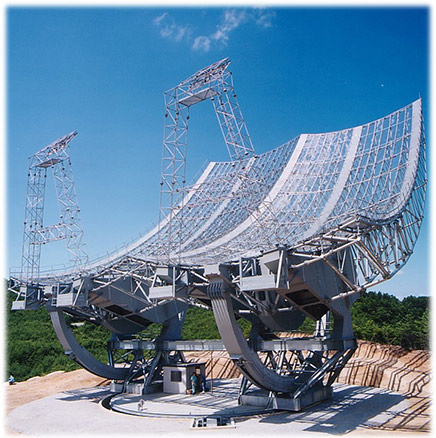
Numerous radio telescopes function together as one giant telescope
As of our interview within November 2024, Associate Professor Hiroaki Misawa of Planetary Plasma and Atmospheric Research Center, Graduate School of Science, Tohoku University is conducting research on the Sun and Jupiter. Specifically, he takes measurements from Earth for radio waves generated during solar flares and Jupiter's high aurora activities in order to better understand dynamical processes of their activities as well as plasma properties of the regions where the radio waves propagate. Large radio telescopes at multiple observatories are used to monitor these radio waves, meaning it is necessary to carry out time synchronization between the locations when analyzing data. To accomplish this, Misawa and his team tried FURUNO's "TB-1" Field Time Sync Generator, which provides a 1 pulse per second (1PPS) and a 10MHz reference frequency, both synchronized with UTC.
Background Information on Time Sync Operations
In order to measure radio waves coming from long distances away in outer space, it is possible to use multiple radio telescopes in combination as a single, virtual radio telescope with a much larger size. This approach is known as radio interferometry. When using just one radio telescope, it is possible to measure radio wave strength at pinpoint locations here and there throughout space, but this limited, single-point perspective makes it impossible to determine the exact origins of those waves. This is a problem that scientists face when using just one telescope.
In contrast, when using multiple radio telescopes in conjunction to observe the same wave, slight variations occur in the time taken for signals to reach each telescope's location, and precise observation and calculation of these differences enables determination of the wave's origin point.
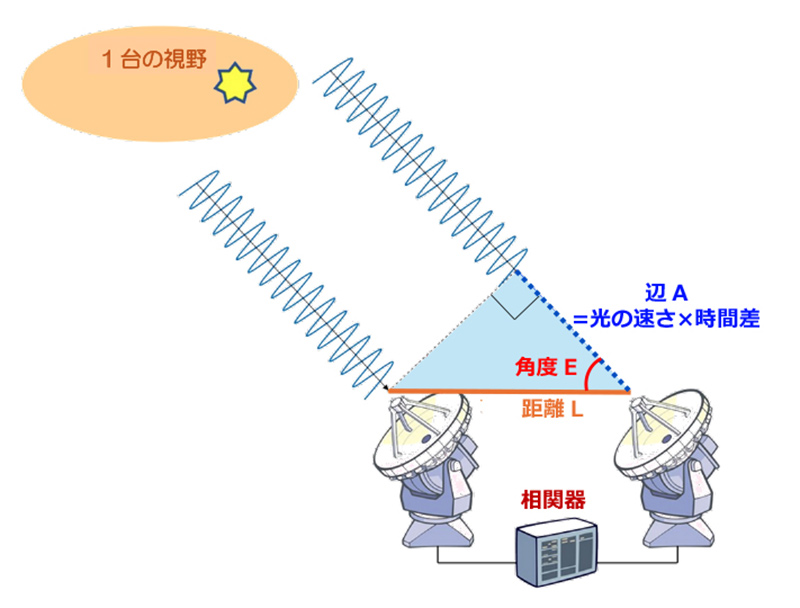
Source: National Astronomical Observatory of Japan, ALMA Project (ESO/NAOJ/NRAO),
https://alma-telescope.jp/assets/uploads/2024/06/37ab9d1a2e3c1f511792115312216277.pdf
For Associate Professor Misawa's research, precise time and frequency synchronization between the various telescopes is of the utmost importance. Tohoku University has observatories at two locations, in Miyagi and Fukushima Prefectures, separated by a distance of several dozen kilometers. The research team also coordinates with other radio telescope facilities around Japan and also in the world to take measurements, necessitating time synchronization with observatories hundreds or thousands of kilometers away. Without reliable time and frequency standards, it would be impossible to obtain trustworthy measurement data, and thus impossible to carry out accurate analyses.
Therefore, it is necessary to utilize a hydrogen maser or other atomic clock at each observatory in order to ensure precise time synchronization among them. However, these are extremely expensive pieces of equipment, and radio signals from the Sun and Jupiter have relatively low frequencies up to a several GHz, meaning high-cost atomic clocks are not needed to attain meaningful radio interferometry results. This is where a time sync generator can be useful.
Equipment Configuration
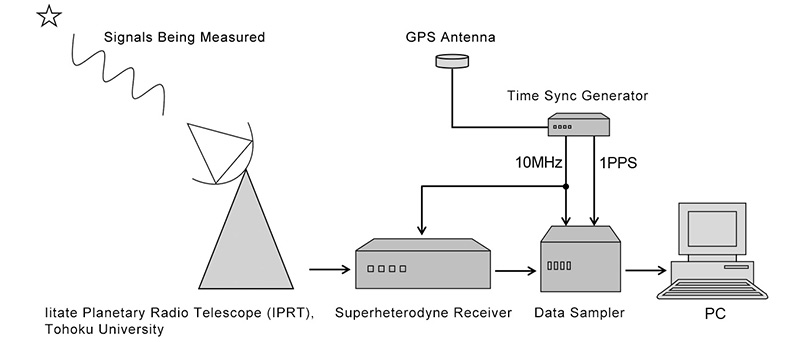
High-precision time synchronization using a GNSS time source is possible even in distant locations
Misawa's team utilizes an equipment setup comprising a superheterodyne receiver, a data sampler and a time sync generator.
After an antenna receives a radio signal from outer space, it is converted in frequency by the superheterodyne receiver so that it can be easlily converted into digital information via the data sampler, and then sent to a personal computer. The 10MHz output of the time sync generator is used to maintain the phase of the received signal, and 1PPS output is used to determine the precise time at which the signal was received.
The research team used a time sync generator for continuous daytime observation of the Sun and nighttime observation of Jupiter, but partway through the project, the time sync generator they were using went out of production, so they had to search for an alternative model. Ultimately, they decided to borrow a TB-1 Field Time Sync Generator from Associate Professor Kazumasa Iwai of the Institute for Space–Earth Environmental Research, Nagoya University, an organization similarly conducting space research based on radio wave measurements.
In addition to the Sun and Jupiter, the researces of Misawa's team is also directed toward more distant celestial objects. "We believe there are planets similar to Jupiter in other star systems, and that they have similar types of auroras. We hope to capture signals from these sources," explains an enthusiastic Misawa.
Reference material: Teishuha Taiyo/Wakusei Denpa Kansoku ni Muketa Tohokudai no Junbi Jokyo ("State of Preparations for Low-frequency Solar and Planetary Radio Signal Observations by Tohoku University"),
https://pparc.tohoku.ac.jp/sympo/sps/proc/2024/SPS2024_P-43_Misawa.pdf
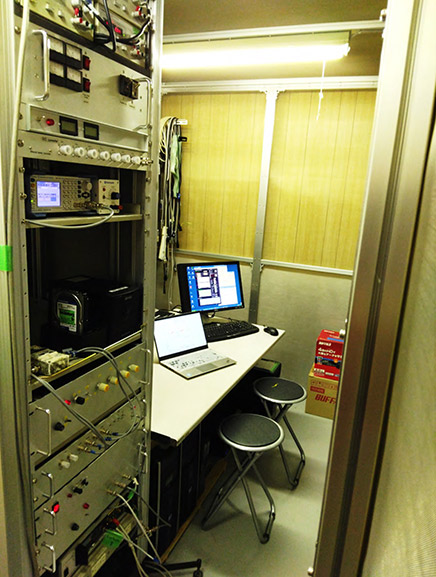
Receiver room situated directly underneath the radio telescope's parabolic reflector
A wire mesh shielded room is placed inside a shipping container to serve as the receiver room.
It is installed with receiver units, data-sampling equipment, and personal computers to control each equipment.
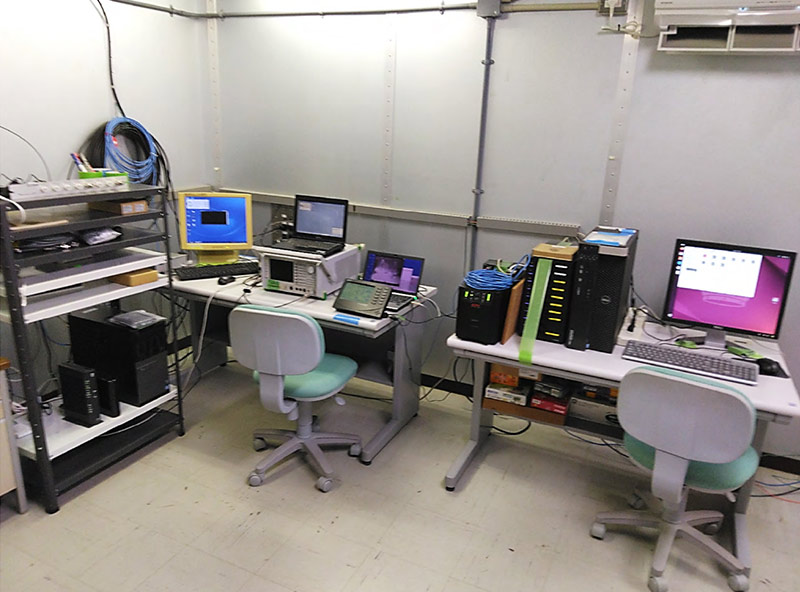
Observation control room situated in the main observatory building, about 50 meters away from the radio telescope
This control room uses metal-panel shielding and is outfitted with computers to control observatory functions, communication equipment, and other necessary devices.
A single time sync generator is used, directing output signals to the receiver room via connecting cables.
Feedback for TB-1
Misawa describes his impressions and expectations of FURUNO's TB-1 as follows:
"We are trying out the TB-1 due to the prohibitive costs of equipment such as hydrogen masers and cesium oscillators. One big advantage of the TB-1 is the fact that it can be put to immediate use after installation. This is particularly impressive because it enables high-reliability signal output in just a short time after powering it on. One area where improvement would be appreciated is performance in terms of the Allan variance. Frequency stability is the most important factor in our research. However, the specs needed to meet our needs in this area are unique to radioastronomy, and may be rather excessive when it comes to normal applications."
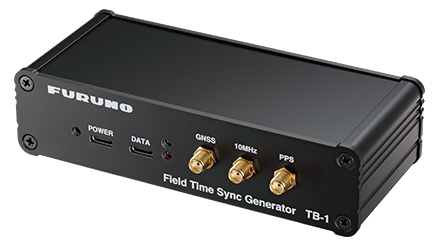
Field Time Sync Generator "TB-1"
Response from FURUNO ELECTRIC
A FURUNO representative responded to Misawa's comments as follows: "Associate Professor Misawa, I thank you for your feedback. I find it surprising that you are using our GNSS receiver—a device with which I am intimately familiar—in your observations of outer space, an extremely vast area which continues to expand. At the same time, I am deeply fascinated by your work.
We appreciate your comments regarding the TB-1, and we plan to take them into consideration during future product planning and development.
Once again, thank you for taking time to sit down for our interview. It has been very rewarding for us."
Related Products
List of Case Studies
-
Automated emergency response systems (eCall / ERA-GLONASS)

-
Smart grid and GPS/GNSS timing solutions

-
Grand Master Clock and GPS/GNSS timing solutions

-
GT in Pmod™ module (NetTimeLogic)NEW

-
Outdoor Time Synchronization: Measurement of Radio Propagation in Outdoor Mobile Communication Environment (Niigata University)

-
Time Synchronization Between Radio Telescopes: Toward Observing Radio Waves from Exoplanets (Tohoku University)NEW

-
Community broadcasting Synchronization [Multi-GNSS Disciplined Oscillator]

-
FURUNO Timing and Synchronization technology adopted base stations for Digital Terrestrial Television Broadcasting

-
FURUNO Timing and Synchronization technology adopted base station for mobile telecommunications

-
FURUNO Timing and Synchronization technology adopted for seismometer


